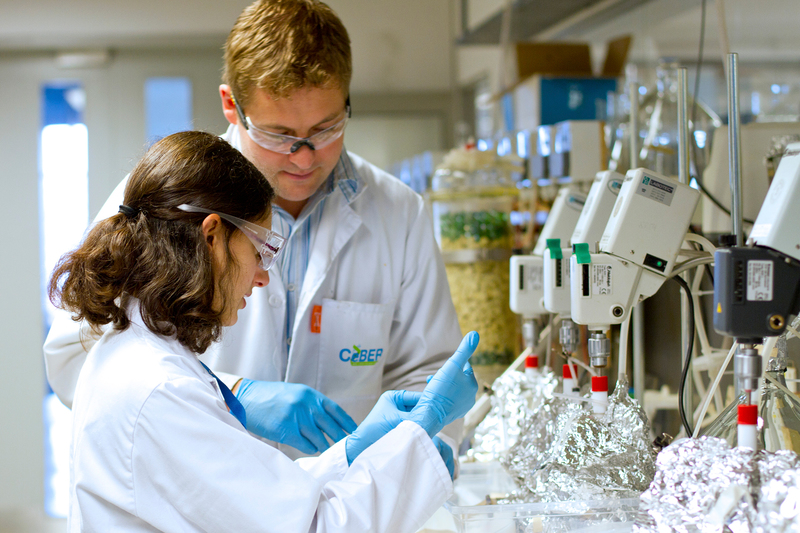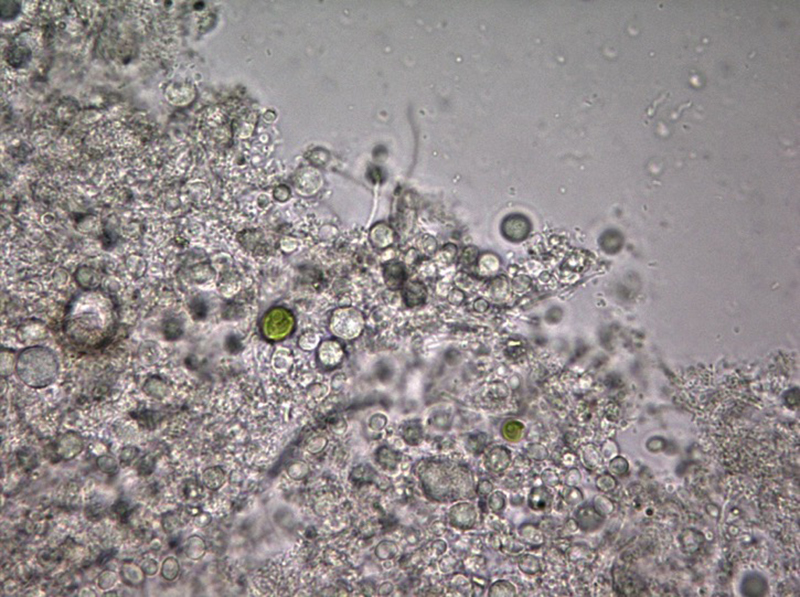Using microorganisms to clean mine water
05 July 2019 | Story Birgit Ottermann. Read time 10 min.
Imagine a settlement where people with different skills live close together and contribute to the community’s overall success: there are farmers who produce food, artisans who process the food, people who consume the food and others who remove waste. They cannot function in isolation relying on each other for survival. Together they are strong and thrive.
“In many ways, a mixed microbial community is like a human settlement,” says Dr Rob Huddy, a molecular biologist, inventor and researcher at the Centre for Bioprocess Engineering Research (CeBER) in the Department of Chemical Engineering and the Future Water Institute at the University of Cape Town (UCT).
“As a molecular biologist, I am fascinated by how we can manipulate and harness microorganisms to do something useful.
“When we put microscopic organisms into a system, and grow them, they have the potential to produce value. For example, microorganisms are used commercially to make cheese, wine and pharmaceuticals.
“They can also be used to treat contaminated wastewater produced by industries such as mining, which is a key focus of my research at CeBER.”

Photo Rob Huddy / © CeBER.
Huddy recently gave a talk on ‘Wastewater Bioremediation: Turning Pollutants into Resources’ at a Café Scientifique event hosted by UCT Research Contracts and Innovation (RC&I) and supported by leading intellectual property law firm Spoor & Fisher. In his presentation, Huddy highlighted the importance of diverse microbial communities and how they can be used to treat contaminated effluents through bioremediation.
“By treating wastewater produced by mining, we are not only protecting the surrounding environment, people and animals from harm. We are also providing a valuable source of cleaned water in a country that is suffering from drought and a shortage of water,” he explained.
Through his research at CeBER, Huddy works with water that has been affected by mining in two ways.
“One is water that’s been used in a particular mining process. Cyanide and thiocyanate, for example, remain in process water after they have been used to extract gold. The other is water that passes through a mine or through mining waste. In many cases, it becomes acidified and picks up high levels of sulphates as well as dissolved metals.”
The problem with abandoned mines
Huddy points out that water polluted by passing through a mine or mining waste is a major problem in South Africa, particularly in the Witwatersrand Basin, Gauteng, where there are many abandoned gold mines. Huge amounts of water must be pumped out of these mines and treated every day.
“By treating wastewater produced by mining, we are not only protecting the surrounding environment, people and animals from harm. We are also providing a valuable source of cleaned water in a country that is suffering from drought and a shortage of water.”
“But we have a potentially even bigger ecological problem across other areas of South Africa, including Mpumalanga, where there are a large number of coal mines that present a dangerous risk,” says Huddy.
These mines leach low volumes of acidic water that’s not currently being treated. Should this contaminated water seep into our groundwater and river systems, it would be detrimental to the community and environment.
Huddy and his colleagues at CeBER are developing processes to treat the effluent from these mines. Their focus is on ways that communities of microorganisms can be harnessed to help neutralise and remove dangerous substances. Processes that use living cells or their parts – bacteria or enzymes, for example – to obtain desired products are known as bioprocesses.
“But to do this effectively, we need to understand the microorganisms’ capabilities and the flow of information between them within communities,” says Huddy. “In much the same way that a town planner would lay out a city so that there is an optimal flow, we would apply that information to design a bioprocess.”
Using DNA to understand microbes
According to Huddy, this is much easier said than done, though, as generally only 1% of microbes can be effectively grown in a laboratory. This means that only a tiny fraction of microbes can be analysed using traditional approaches.
“Only recently have there been some fairly significant advances in molecular biology that have allowed us to unravel these complicated communities,” says Huddy. “Basically, it’s all around DNA sequencing: the ability to extract the DNA (genetic information) from all the cells that are present within a particular environment, and analysing that to understand what microbes are present.
“We have identified 157 microorganisms present in a gold mining wastewater treatment process. Of those, only five have the ability to break down the thiocyanate in the water. However, without understanding those five, we cannot design a process to manage them.
“So, we use the concept of metagenomics – or the analysis of total DNA from the environment – to resolve these complicated communities.”
“Having in-depth knowledge of what makes a community of tiny – yet powerful – organisms tick, provides us with control over bioprocesses.”
Huddy explains that using metagenomics on a microbial community is, in some respects, like conducting a census in a human settlement.
“We get information about who is present, what functions they play, their potential and what makes them flourish. From our perspective, it is about identifying the role that an organism plays in the community, especially with respect to our bioprocesses: how we can operate our bioreactors so that the five key micro-organisms we’ve identified can do their job optimally.”
Control is key
CeBER researchers send the DNA that they collect from systems used to process mine water to a service provider that sequences it and records the information digitally. “We are very lucky to have a collaborator, Prof Jill Banfield, in the United States, who is a world leader in this approach and works very closely with us on these processes.
“We are getting valuable insights into the structure of the community, the types of microbes present and their metabolic potential.”
Control is key, he adds. “Having in-depth knowledge of what makes a community of tiny – yet powerful – organisms tick, provides us with control over bioprocesses. We can thus harness their potential and potentially prevent the system from falling over.
“Ultimately, it helps us to produce water that would otherwise be toxic and contaminated: a water source that offers value to the surrounding community.”
 This work is licensed under a Creative Commons Attribution-NoDerivatives 4.0 International License.
This work is licensed under a Creative Commons Attribution-NoDerivatives 4.0 International License.
Please view the republishing articles page for more information.










